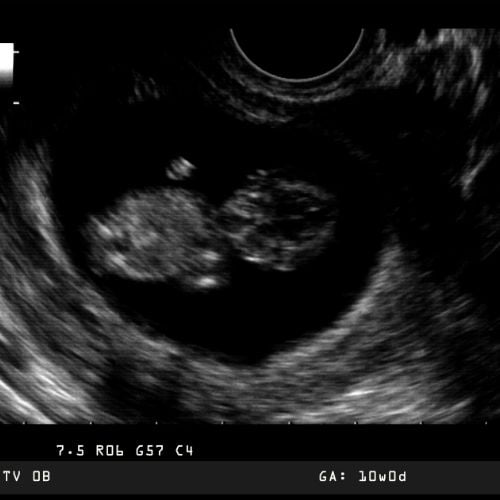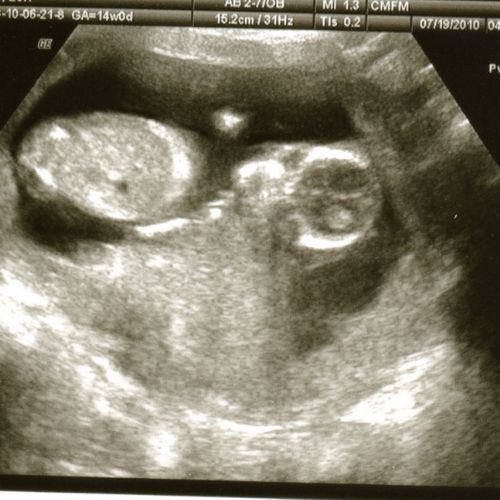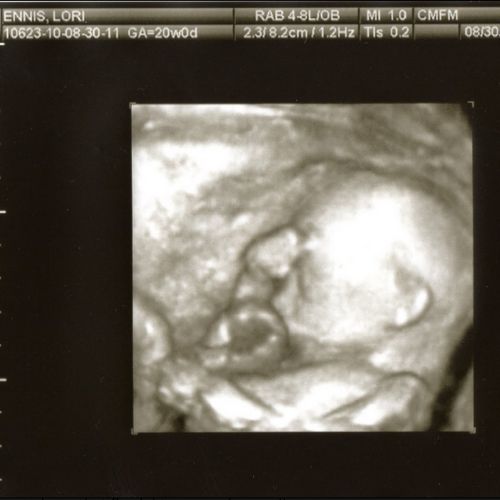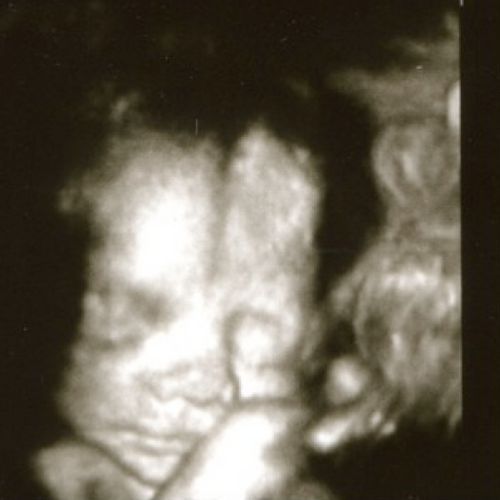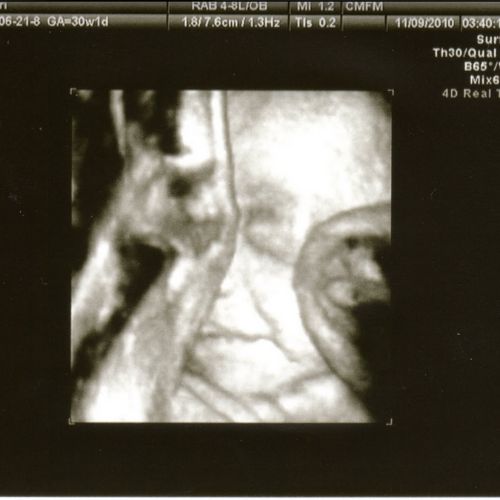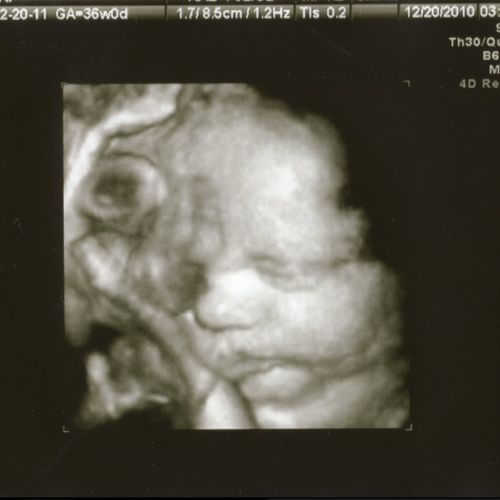Fetal Development Milestones
At conception, everything about your unborn baby has been determined – whether it is a boy or girl, eye color, hair color, talents and personality. Your unborn baby’s heart begins beating just 3 weeks after conception. Twelve weeks after conception, your unborn baby is coordinated enough to suck his or her thumb. At 22 weeks after conception, your unborn baby can recognize your voice, breathing, and heartbeat. We provide free limited diagnostic ultrasounds or sonograms to confirm pregnancy. In order to receive a sonogram a pregnancy test must be completed in one of our Centers.
CALL
TEXT
APPOINTMENT
Fetal Development Milestones
1 day to 7 week fetal development
A new individual receives 23 chromosomes from each parent. He or she is truly a unique individual human being, never to be repeated. A new person has been created, who at this stage is a tiny living organism weighing only 15 ten-millionth of a gram. Life begins.
First day of new life: The first cell divides into two, the two into four, and so on. Each of these new cells divides again and again as they travel toward the womb in search of a protected place to grow.
18 days from conception, heart begins to beat, with the unborn baby’s own blood.
28 days from conception a unborn baby has eyes, ears, and even a tongue!
28 days from conception: Muscles are developing along the future spine. Arms and legs are budding.
30 days: Unborn baby has grown 10,000 times to 6-7mm (1/4”) long. Brain has human proportions. Blood flows in veins.
42 days: Skeleton is formed. Brain coordinates movement of muscles and organs. Reflex responses have begun.
42 days: Brain waves can be detected, the jaw forms, including teeth and taste buds. The unborn baby begins to swallow amniotic fluid. Fingers and toes are developing.
45 days from conception: The unborn baby is making body movements, a full 12 weeks before the mother may notice such stirrings. By seven weeks the chest and abdomen are fully formed. Swimming with a natural swimmer’s stroke in the amniotic fluid, the unborn baby now looks like a miniature human infant.
44-45 days: Buds of milk teeth appear, and the unborn baby’s facial muscles develop. Eyelids begin to form, protecting the developing eyes. Elbows take shape. Internal organs are present, but immature. 99% of muscles are present, each with its own nerve supply.
52 Days: Spontaneous movement begins. The unborn baby then develops a whole collection of moves over the next 4 weeks including hiccuping, frowning, squinting, furrowing the brow, pursing the lips, moving individual arms and legs, head turning, touching his/her face, breathing (without air), stretching, opening the mouth, yawning and sucking.
8-10 week fetal development
8 Weeks: Now a small-scale unborn baby, at approximately 3 cm (1 1/8”) and weighing a gram (1/30gth oz.), yet well proportioned. Every organ is present. Unborn baby’s heartbeat is steady. Stomach produces digestive juices. Liver makes blood cells. Kidneys begin to function. Taste buds are forming.
8 ½ Weeks: The unborn baby’s fingerprints are being engraved. Eyelids and palms of hands are sensitive to touch.
8- 8 ½ Weeks: Of the 4500 structures in the adult body, 4000 are now present in the unborn baby. The skeleton of the arms and legs and the spine begins to stiffen as bone cells are added.
9 Weeks from conception: The unborn baby will bend fingers around an object placed in his/her palm. Unique fingerprints appear. Thumb sucking may occur.
10 Weeks: The unborn baby’s body is sensitive to touch. He/she squints, swallows puckers up brow and frowns. Eyelids, fingerprints and even fingernails are evident.
11 week fetal development
11 Weeks: The unborn now “practices” breathing, since he/she will have to breathe air immediately after birth. Unborn baby urinates, and stomach muscles can now contract. Vocal chords and taste buds form. Facial expressions and even smiles are evident.
12-17 week fetal development
12 Weeks: Though too small to be felt by the mother, the unborn baby reaches peak frequency of movement during the third month. The unborn baby’s sex can be visually determined, and the unborn baby’s eyes, ears and face begin to display distinctive characteristics. He/she can kick, turn feet, curl and fan toes, make a fist, move thumbs, bend wrists, turn head, open mouth and press lips tightly together.
12 Weeks: The unborn baby is now about 3 inches long, weighing approximately 2 ounces. Fine hair begins to grow on his/her upper lip, chin and eyebrows. The unborn baby swallows and responds to skin stimulations.
13 Weeks: The unborn baby is about 3 inches long, weighing approximately 3 ounces. His/her facial expressions may resemble the parents. The unborn baby is active, but the unborn baby is too small for mother to feel anything.
14 Weeks from conception: At this age, the heart pumps several quarts of blood through the body every day. The unborn baby’s eyebrows have formed and eye movement can be detected.
15 Weeks: In the growth development of the unborn baby, a wild production of nerve cells begins and continues for a month. A second surge will occur at 25 weeks. By now the unborn baby also has an adult’s taste buds.
4 Months: The unborn baby is now only 5 ½ inches long, weighing approximately 5 ounces. He/she is actively moving about inside the safety of the womb. The unborn baby turns, kicks and even somersaults – some of which can now be felt by the mother.
4 Months: Bone marrow is now beginning to form and the unborn baby’s heart is pumping 25 quarts of blood a day.
18-19 week fetal development
4 1/2 Months from conception: Still very small (less than 8 inches in length), the unborn baby can have dream (REM) sleep. Nostrils and toenails become visible.
4 1/2 Months: The unborn baby’s ears are functioning by the end of the 4th month and he/she hears the mother’s heartbeat, as well as external noises like music. The unborn baby is also able to experience pain. Life-saving surgery has been successfully performed on babies at this age.
18-20 Weeks: The unborn baby has grown in size approximately 7 ½ inches long and 14 ounces in weight. His/her movements can now be felt by the mother, including the unborn baby’s hiccups.
20-26 week fetal development
5 Months: Each side of the brain now has a billion nerve cells. If a sound is especially loud, the unborn baby may jump in reaction to it. Thumb-sucking has been observed during the 5th month.
5-6 Months: The unborn baby practices breathing by inhaling amniotic fluid into its developing lungs. The unborn baby will increase seven times in weight and nearly double in height.
6 Months from conception: Fine hair grows on eyebrows and head. Eyelash fringe appears. The unborn baby’s weight is about 640g (22 oz.), height 23cm (9”). Babies born at this age have survived.
27-32 week fetal development
25-28 Weeks from conception: The unborn baby can recognize his/her mother’s voice. The unborn baby is using four of the five senses (vision, hearing, taste, and touch), opens and closes his eyes, and knows the difference between waking and sleeping, and can relate to the moods of the mother.
8 Months: The unborn baby’s skin becomes pink and smooth. The pupils of the eye respond to light.
8 Months: The unborn baby’s weight increases by 1 kg. (over two pounds) and his/her living quarters inside the mother’s womb are becoming cramped.
8 Months: The unborn baby’s fingernails reach to the tip of the finger. The skin begins to thicken, with a layer of fat stored underneath for insulation and nourishment.
8 Months from conception: The unborn baby swallows a gallon of amniotic fluid each day and often hiccups. Though movement is limited, due to the cramped quarters the unborn baby’s kicks are stronger, and mother may be able to feel an elbow or heel against her abdomen.
33+ week fetal development
9 Months (33-40 Weeks) from conception: The unborn baby gains about one-half pound per week as she/he prepares for birth. The bones in the unborn baby’s head are soft and flexible to more easily mold for the journey down the birth canal.
9 Months (33-40Weeks): The unborn baby triggers labor and birth occurs, an average of 264-270 days after conception. Of the 45 generations of cell divisions before adulthood, 41 have already taken place. Only four more come before adolescence. Ninety percent of a person’s development happens in the womb.

Dr. Ejiroghene Onos
Medical Director
The content on this page has been reviewed and approved by our medical director: Dr. Ejiroghene Onos
It’s your right. Know your options.

